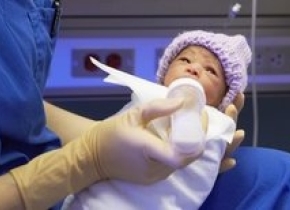
医生笔下的青春小说触及生死问题
小儿心脏科医生艾斯美·威廉姆斯正谈到她创作的青春小说《五月水语》,这本书的主人公是一位15岁少女,她新生的孩子有致命的心脏问题。
撰稿:Steve Mirsky史蒂夫·米尔斯奇
翻译:张心茹
审校:潘磊
“My book is called Water in May. It’s about a 15-year-old Dominican-American living in Washington Heights named Mari Pujols. And she wants more than anything else to have a baby…and so she’s very excited when she finds out that she’s going to have a baby. And then the doctors tell her her baby has only half a heart.”
我的这本书名为《五月水语》,主人公是一个15岁多米尼加裔美国人,住在华盛顿高地,叫玛丽·普乐斯。她渴望拥有一个孩子,得知怀孕时非常兴奋。但很快就被医生告知,她的孩子仅有半个心脏。
Ismée Williams. Dr. Williams is a pediatric cardiologist at Montefiore Hospital in the Bronx. And the author of the young adult novel Water in May.
艾斯美·威廉姆斯医生是蒙特菲奥里医疗中心(位于布朗克斯)的一位小儿心脏科医生,也是青春小说《五月水语》的作者。
I met Williams May 19th at the first annual Bronx Book Festival at Fordham Plaza in New York City’s northernmost borough. As with so much so-called young adult fiction, the novel deals with serious issues, including the medical issues surrounding such a heart defect.
5月19日纽约最北区的福德海姆广场上,首届布朗克斯年度书节正在举行,我见到了威廉姆斯。和许多青春小说一样,她的小说也触及了一些严肃的专业问题,就包括有关心脏缺陷的医学问题。
“We do surgery for this type of heart problem, which is called hypoplastic left-heart syndrome.”
Forty years ago, 95 percent of infants with the condition died within a month. Now, most of these kids will make it to adulthood—but will also need frequent medical monitoring and care.
“我们会手术治疗患有左心发育不全综合征的患者。40年前,95%的患儿会在一个月内死亡。现在大多数患儿可以活到成年——但也需要频繁的医学监测和治疗”
Anyone buying the book will support a worthwhile cause, too.
如果你购买这本书,也会为这项有价值的事业做出贡献。
“Forty-thousand kids a year are born with heart defects…I’ve partnered with a group called Colin’s Kids, which raises money for families who are affected by congenital heart disease and are in financial need, and also raises money for research. So five-percent of book sales go directly to them. Because part of my goal for writing the book is also to raise awareness about the number one birth defect, the most common birth defect.”
“每年有4万心脏缺陷的新生儿诞生。一个叫做“柯林斯的孩子”的组织与我合作,这个组织为有先天性心脏疾病的患儿、且有经济需要的家庭募集钱款,也为先天性心脏病的相关研究募集钱款。我创作这本书另一方面也是为了加强公众对心脏缺陷的认知。心脏缺陷其实是最普遍的新生儿缺陷。”
未经书面许可任何人不得复制或镜像
京ICP备11000850号
 京公网安备11010502039775号
京公网安备11010502039775号 信息网络传播视听节目许可证0111611号
国家科技基础条件平台

















